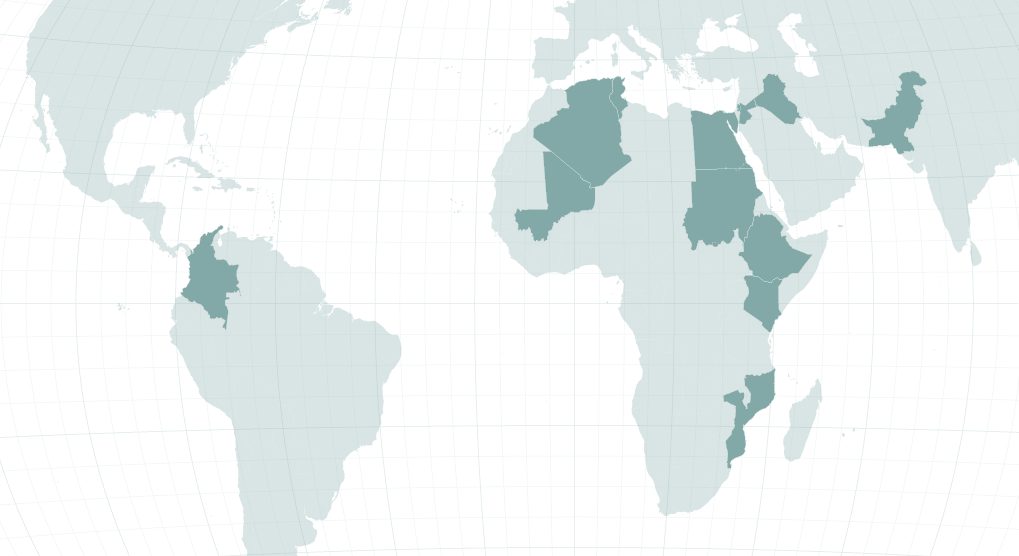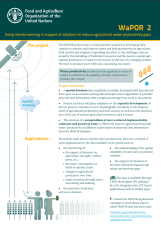WaPOR phase 2
After a first phase of the project that was focused on the development and improvement of the database, the second phase will continue that work while focusing more heavily on applications and uses of the data by working closely with relevant stakeholders in partner countries.
This new phase of the project started in January 2021, and the official kick-off event took place on the 26th of November of the same year. It is heavily shaped by experiences from the first phase and a midterm evaluation that was done on the project activities that were implemented then. Following the recommendations from the evaluation, this 5 year-long phase of the project will be more demand-driven than the previous and, even though project outputs will ultimately be useful more broadly, the project focuses its activities in 13 partner countries:

WaPOR partner countries: Algeria, Mali, Tunisia, Iraq, Jordan, Palestine, Egypt, Sudan, Ethiopia, Kenya, Mozambique, Pakistan and Colombia.
Update
As announced during the 2022 World Water Week, the WaPOR project has benefited from a top-up from the Ministry of Foreign Affairs of the Netherlands, that is enabling the expansion of the database from the current coverage of Africa and the Near East to the entire world at 100m resolution. Also, this WaPOR 2 top-up is permitting the addition of two partner countries, one in Asia and another in Latin-America.
Phase 2 of the WaPOR project will have three main components; expand to learn more about each of them:
The current WaPOR database, containing data related to biomass production, evapotranspiration and agricultural land and water productivity in Africa and the Near East, will be continued and expanded, ensuring an uninterrupted data availability since 2009. More higher resolution (30m resolution) areas will be created for partner countries lending themselves to different types of applications such as monitoring of the health of specific crops in the fields, higher precision irrigation monitoring and scheduling, among others.
This component of the project is a central one as it will enable local stakeholders to make use of the database in the elaboration of practical solutions to locally-identified issues, and end-users to put them in practice. The capacity development will also cover policy-relevant applications that support sustainable water management, water governance and agricultural policies.
The capacity development efforts that will be undertaken under WaPOR 2 will have a strong consideration for long-term sustainability, aiming to focus on partners that can continue to provide services after the end of the project.
This project component foresees the co-development of a compendium of user-centered solutions and practical tools to effectively improve agricultural land and water productivity at different scales based on near real time information from the WaPOR database. Such solutions and tools might vary from practical ICT solutions to improve agricultural production systems, to de-risk investments (e.g. credit and insurance) and support water management (e.g. modernization of irrigation systems), water governance (e.g. water accounting and auditing) and agricultural policies in river basins and countries, etc.

